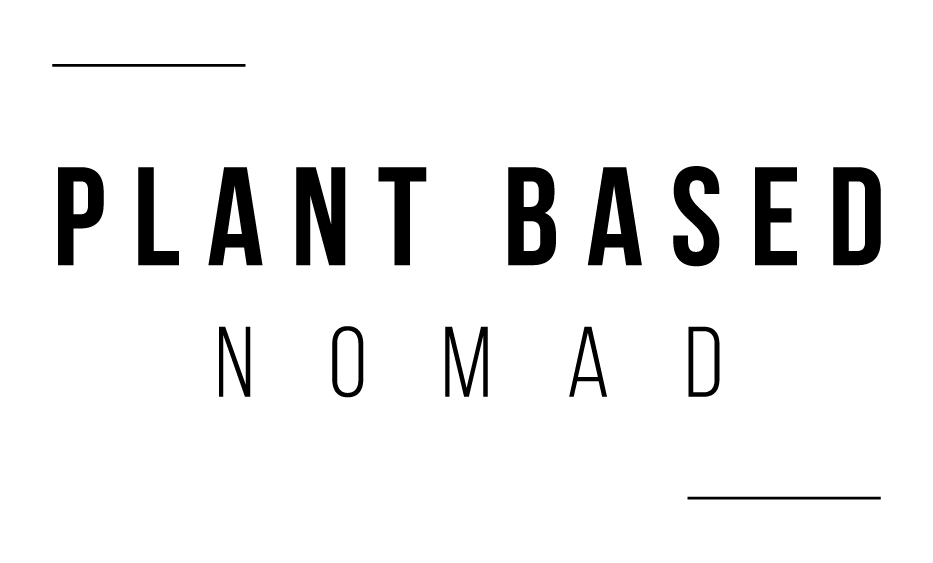
How ‘plant-based’ rebranded vegan eating for the mainstream
“‘Plant-based’ is as close as you can get to the farm.”
– Phil Lempert, food industry analyst
Making the rounds at the Fancy Food Show in San Francisco last month, Phil Lempert couldn’t help but notice a curious pattern in the myriad chips and protein bars and truffle brie and deli meats on display.
The trade show is a harbinger of bubbling trends, and this winter’s edition brought foods made from pea protein, beets, chickpeas and cashews. Yep, the vegan offerings were ascendant. But they were also vastly different from the strangely pink faux hot dogs and slabs of phony bologna that Lempert, a veteran food industry analyst, had observed for decades.
Also Read: Beyond plant-based eating: Food and restaurant predictions for 2019
These foods were creative and snacky, he recalls, and moreover, many weren’t even being billed as vegan. They were “plant-based.”
“The hottest trend was clearly plant-based everything – beverages, cheeses, imitation meats,” Lempert says.
The next time you’re at the grocery store, take a closer look at the shelves. Products emblazoned with the term are popping up in every aisle and in every form: plant-based plantain yogurts, seitan sausages, kale chips, pea-protein shakes, oat milks. The number of new U.S. food and drink products that mentioned “plant-based” grew 268 percent between 2012 and 2018, according to consumer research company Mintel.
In lieu of billing themselves as vegan, restaurants also are adopting the term: Plant-based fast-casual Shouk sprang up in Washington, and there’s plant-based pizzeria the Pizza Plant in Pasadena, California, and the upscale plant-lovers haven Planta in Miami and Toronto. Trendy chain By Chloe uses both “plant-based” and “vegan” to convey to customers exactly what it does, which is serve tempeh-lentil-chia burgers and matcha-kelp noodles, and not a lick of meat.
‘Smart use of terminology’
While there are plenty of cultural underpinnings for the plant-based explosion – we’ll get to that in a bit – few are more powerful than the phrase itself.
“‘Plant-based’ is as close as you can get to the farm,” Lempert says. “It’s a really smart use of terminology.”
And while experts consider a “plant-based diet” completely free of animal products, consumers have begun to see nuance in a term that evokes vegetables and healthfulness but spares diners the hard stop of “vegan” or “vegetarian.” They see a gentle nudge to eat more vegetables, not an admonition to stop eating meat – leaving, for some, just enough wiggle room to sneak in a scallop crudo … or a burger.
While many plant-based products are vegan, their target audience isn’t vegans. It’s “the meat eaters and the dairy eaters,” says Melanie Bartelme, an analyst for Mintel. “For the majority of consumers, it’s not abandonment, it’s a ‘sometimes swap.'”
But is that really what advocates of plant-based diets wanted?
It’s all in how you spin it.
“The term ‘vegan’ tends to mean someone has to have a membership card to an exclusive club,” explains Michele Simon, executive director of the Plant Based Foods Association, which was founded in 2016 and represents more than 100 companies, including Tofurky and the Campbell Soup Co. “You have to shun all forms of animal products, and it’s just not something that’s appealing to most people.” (She’s not wrong: Plenty of sources put the number of Americans who identify as vegan at just 3 percent and vegetarian around 6 percent. )
“Plant-based,” on the other hand, offered broader appeal, plus the ring of familiarity. “Most people have eaten vegetables of some sort,” Simon says with a chuckle. “It might be french fries, but it’s still plant-based.”
For many consumers, the plant-based gateway drug isn’t fries. It’s milk – or rather, milks wrung from almonds, coconuts, oats and even peas, which are quickly outpacing the old, familiar soy milk. (When was the last time you heard someone at Starbucks order a whole-milk latte?) They’re the biggest sellers in the plant-based world, but lab-created meat substitutes such as the Impossible Burger; “Cashewgurt”; and even that old vegetarian staple, tofu, aren’t lagging far behind. Sales of such foods spiked 20 percent between 2017 and 2018, according to Nielsen data commissioned by the Plant Based Foods Association. And the plant-based labeling is helping many move from your neighborhood health-food co-op or Whole Foods to the shelves of Walmart.
Also Read: People Really Are Buying Plant-Based Proteins
Traditional meat processors such as Tyson Foods, famed for Jimmy Dean pork sausages and chicken nuggets, have also placed wagers on start-ups including Beyond Meat, manufacturer of a much-buzzed-about pea-protein burger. Fast-food chains, including Del Taco, McDonald’s and Carl’s Jr., are adding vegan and vegetarian options to their menus, taking care to advertise them as plant-based.
The term may be hot, but it isn’t new, Simon says. “It’s just that things take time to find their way into the conversation.”
It’s taken about 40 years. Colin Campbell is considered a godfather for coining the term that jump-started so many chickpea snacks. Campbell, a nutritional biochemist, was working with the National Institutes of Health in the 1970s and 1980s and was presenting a paper about diet when he realized he needed a phrase his colleagues would both understand and not immediately shoot down.
Campbell grew up on a dairy farm in Leesburg, Virginia, an hour outside Washington. He took an active role, he says, in pushing the consumption of animal protein. So “vegetarian” was out. “Plant-based,” with its folksy evocation of farms and greenery, was in.
“It was a little bit awkward. I wasn’t too happy with it,” he says now. But it exploded after he featured it in his milestone 2005 book, “The China Study,” which confirmed many of the notions vegans and vegetarians held dear.
Remarkable in its popularity, the book, which pegged a diet of mostly plants to longer, healthier lives, dovetailed with the rise of wellness culture and the recognition of the environmental impact of meat production, experts say.
There were other turning points. Investigators from the American Cancer Society published findings in the mid-2000s announcing a link between eating red and processed meats and colorectal cancers. A decade later, the World Health Organization made a firmer declaration, announcing that processed meats such as bacon did cause cancer, and that red meat “probably” did, too.
If the headlines caused people to rethink their diets, it was a movie that helped familiarize them with another way of eating. The documentary “Forks Over Knives” was released in theaters in 2011. Our burgeoning Netflix-and-chill habit, however, somehow turned a pretty pedantic documentary about health and diet into a talker. At the movie’s crux was Campbell and his “whole-foods, plant-based diet.”
“It turned out almost by accident that the term ended up being a great marketing tool for the vegan community,” says Brian Wendel, who produced the documentary, which has since exploded into a franchise that includes an app, magazine and cookbooks. Athletes such as the National Football League’s David Carter have cited the film as reasoning for embracing a vegan diet; politician (and newly minted presidential candidate) Cory Booker, while long a vegan, has discussed embracing a more whole-food, plant-based diet, too.
“‘Forks Over Knives’ was awesome. It really changed a lot of people’s opinions,” says Jaime Athos, chief executive of Tofurky, a more-than-20-year-old vegan brand that recently began packaging some of its products with a clear “plant-based” label. The term, Athos says, “is a way to communicate what these foods are, what this diet is, while peeling away some of the connotations attached to it.”
Vegans eschew wool, honey, leather and some forms of food processing. But plant-based is simply a diet, or, in 2019, just a bag of beet chips sneaked between meals.
The mainstreaming has Wendel concerned that the original intentions of the plant-based diet touted in his film – which he sees as a traditional diet of whole foods, with beans, rice, sweet potatoes and other staples – are getting lost in translation.
“There’s been further confusion along the way, because basically everybody – even food companies – started using [‘plant-based’]. In some ways it’s not incorrect, because it is based in plants,” he says. But with a sea of faux meats, chips and other snacks arriving in stores, the “whole foods” qualifier is growing in importance. “All the meat analogues, the fake cheeses – they’re very different from your beans and rice.”
And for all the talk of plant-based eating, it hasn’t quite caught fire with consumers, Simon says. “Meat eating is not even necessarily going down,” she says. The industry, she adds, has a way to go if its goal is to get everyone on the plant-based boat.
Even Athos isn’t sure the term will work with everyone. “We started using ‘plant-based’ because people better reacted to ‘plant-based.'” But then he saw studies in which young men weren’t, preferring another burgeoning term – ‘plant-powered’ – instead.
‘Plant-washing’
Meanwhile, as manufacturers stamp the term on cereals, protein drinks – and, according to Simon, a cookbook that included fish – a phenomenon that she refers to as “plant-washing,” vegans and vegetarians might soon find the term entirely unhelpful.
“Now, we’re straddling the issue,” Athos says, emblazoning much of Tofurky’s packaging with the plant-based label and a vegan one.
After all, two different audiences, two different messages.
Click here to view original web page at How ‘plant-based’ rebranded vegan eating for the mainstream

